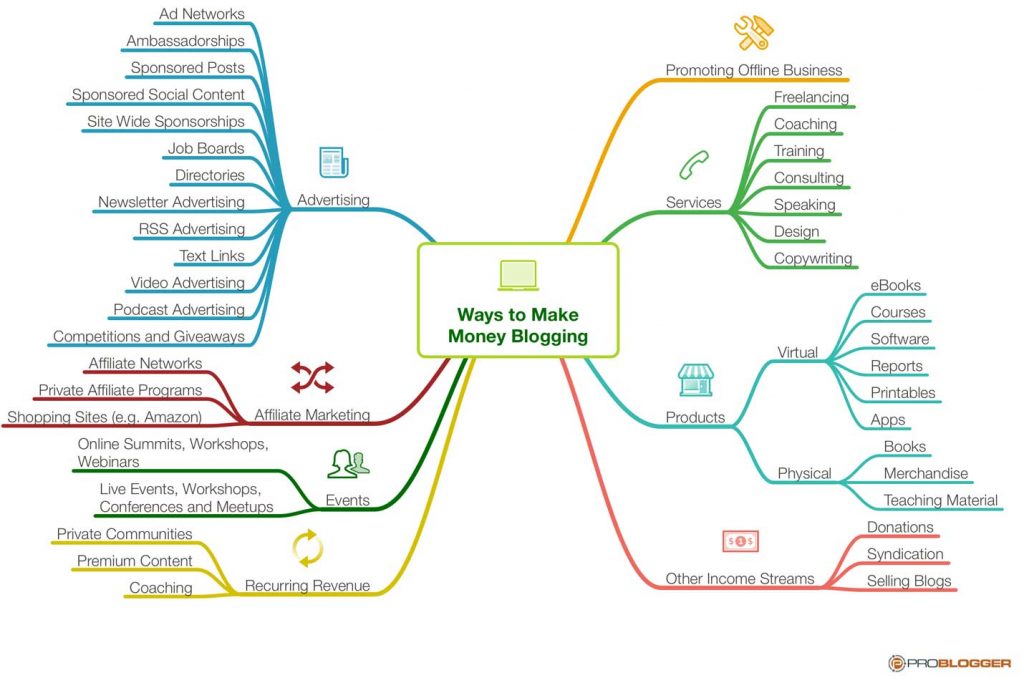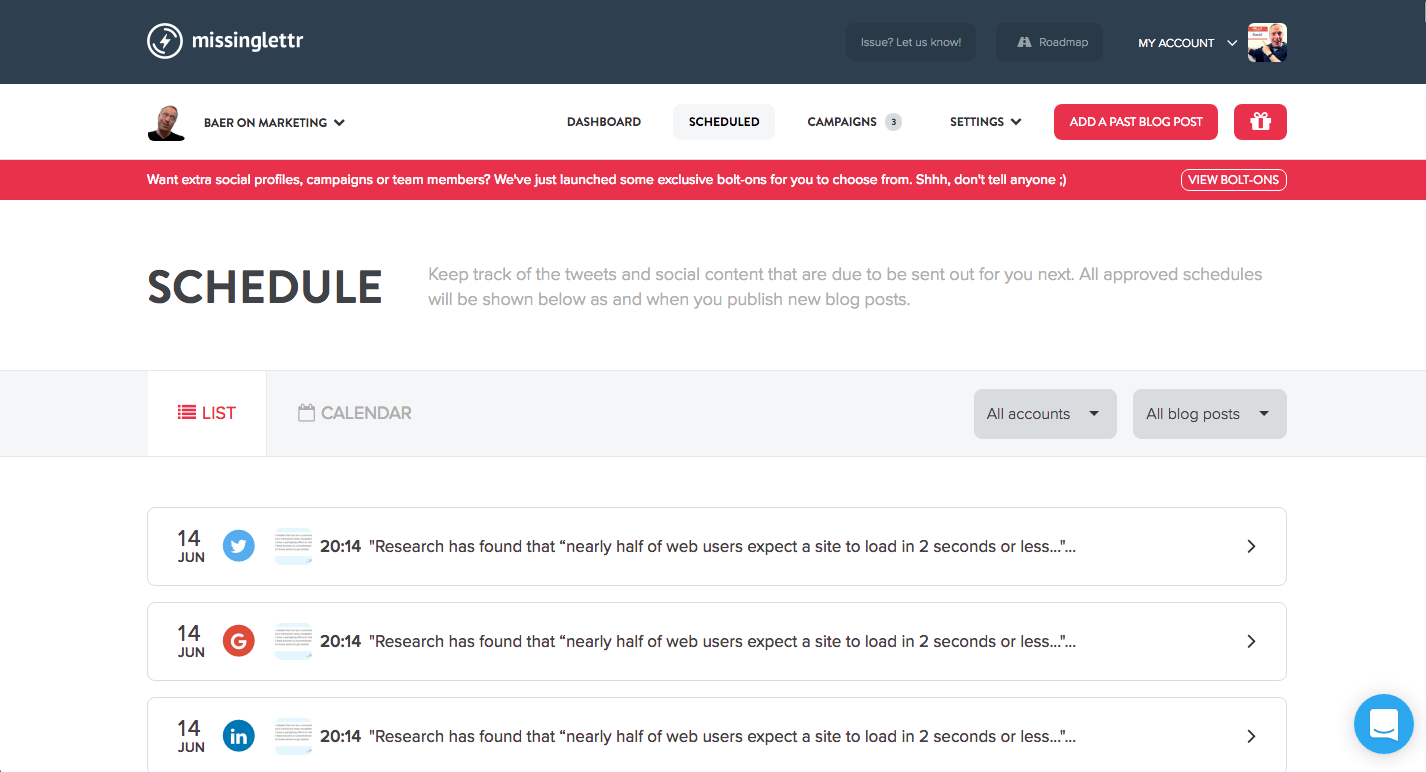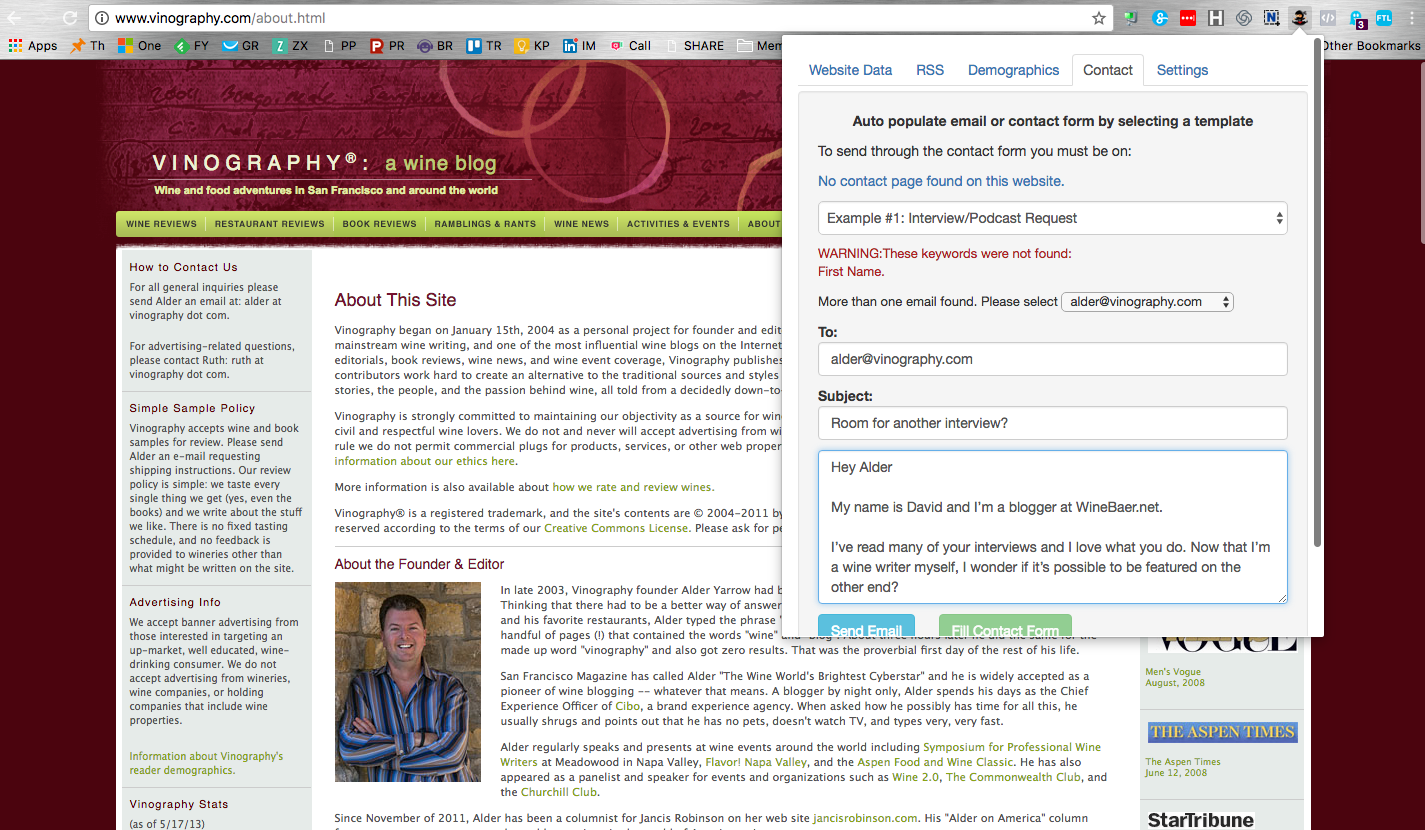
Blogging is now an amazingly profitable activity. Not only are blogs ideal marketing tools for just about any kind of business – from real estate listing sites to SaaS startups – but they can also become businesses on their own.
Why are blogs so powerful? Well, every single day, there are billions of searches on Google… most of them looking for answers to questions. And where do those answers reside? Blogs, of course!
…and there are billions of them out there. Yup, that's billions with a B!
And, by some estimates, we're seeing more than one thousand new websites coming online every single minute, meaning that there's a LOT of content out there to answer those questions being asked on the search engines. Not all of those new sites are blogs, of course. And not all blogs are created equal. In fact, most aren't worth the time of day. But those which are… well, they've got a ton of opportunity to generate revenue.
How do blogs generate revenue?
Well, consider that blogging is one of the biggest forms of online content. And content is what gets the eyeballs. And when you've got people consuming your content, you've got a captive audience which you have the ability to monetize.
And there are endless ways to monetize a blog. Here's a graphic created by ProBlogger's Darren Rowse on some of the ways he's come up with to make money blogging:

A WORD OF WARNING
Blogging is not a “set-it-and-forget-it” marketing strategy. To succeed with a blog, you need to create new content with consistency and provide readers with true value. There are plenty online who are selling the idea that it's possible to cheat the system by automating content and start churning cash out of your blog. That's just hype – and a great way for you to lose valuable time (and money) in the process of trying.
But there are those out there – both individuals and companies – generating outrageous amounts of income from their blogs. Popular blog sites like TechCrunch and Mashable are each estimated to be earning more than one million dollars per month. And even a site like PerezHilton.com is pulling in hundreds of thousands every thirty days. And that's almost all of that income is earned passively.
Passive income, is, of course, the Holy Grail of earning money. “Do the work once and get paid forever,” as my friend David Perdew likes to say. (Incidentally, for more on that topic, be sure to grab a copy of his awesome introduction to incorporating passive income into your business.)
Now… back to blogging. If you're itching to become one of those 6-figure bloggers that you’ve heard so much about, I'm about to share with you the formula for making it happen.
I’ve eliminated the clutter and time-consuming work-around so that I can take you deep into the heart of successful blogging without over-complicating the process, or forcing you through a long, drawn out learning curve.
The Truth About Blogging
Here’s the truth about 6-figure blogging: As I mentioned above, a great blog delivers valuable content with consistency. Sure you can automate things by sharing high-quality content created by others, but you shouldn’t expect income to be passive from the get-go. You’ll have to work at it, especially when you are launching your blog and building a platform that you want to be recognized in your market.

Back in my early blogging days, I spent dozens of hours a month creating content, converting visitors into email subscribers, and selling products and services (not my own products or services. More on that in a bit).
I still write a lot of my own content. But over time, I've come up with systems to make the process far more efficient. One is to outsource some of the writing. Another approach I've used has been to develop my own custom templates which can quicken your content development process. And, finally, I have even used licensed content which I've posted “as-is” or used as a starting point for developing something new.
While you can delegate many tasks to a team, such as content creation and even marketing, you will want to be directly involved in the initial building phase. This is your brand, after all. You need to make sure every piece of content has your voice, carries your message and represents your business in the best possible way.
No one will ever be as careful and professional with building your blog as you will be. Right? So I highly recommend you commit to spending the first few months building your blog from the ground up. Then, and only then, should you begin to create a team to help you manage your blog.
To be clear, blogging is far from a hands-free revenue generation method. You must be prepared to put in some time and effort in if you expect success. But the good news is that our hard work will pay off.
The (Not So Secret) 5-Step Formula
While there are countless tutorials out there that overcomplicated the process of making money with blogging, here’s a basic overview of how it’s done:
1: Create a blog and register a memorable domain. Avoid remotely hosted options like Blogger.com or WordPress.com. You need to be in full control of your website so you can take advantage of all the different revenue options without limitation.
2: Write (or outsource) killer content that will generate traffic and drive visitors in. This content needs to be extremely high-quality, targeted and informative. All meat, no veggies.
3: Convert your visitors into email subscribers so you can build your list. An email list is key in building a successful blog online. Scratch that; an email list is essential to be successful in just about ANY market online. You will never make as much money without one.
4: Communicate with those subscribers regularly so your lists don’t run cold. Build rapport and trust. Nurture relationships with your market. This is where you can build a recognized brand as an authority in your market and set yourself apart from the competition (especially those bloggers who aren’t doing this!).
5: Sell products and services to your audience via your blog and through your newly cultivated newsletter.
Sounds easy enough, right? It is. But it will take time. Let’s dig into each of these steps a bit deeper so you better understand how it works.

CREATING YOUR BLOG
I'm not going to go into detail about building the platform. Just know that you should always choose a memorable domain that is targeted to your market and that you set up a professional hosting account that houses your blog. I highly recommend using WordPress for managing your blog. If you're not familiar with WordPress (or just need some help getting started with it) this will get you up-and-running in no time. In the case of my blog, I've chosen the domain
In the case of my blog, I've chosen the domain BaerOnMarketing.com, because it's me, David Baer, writing on the subject of marketing.
CREATING CONTENT FOR YOUR BLOG
The type of content you create will depend on your target audience, but every piece of content should be informative and address the interests and needs of your audience.
Your content will be what drives traffic to your site and keeps visitors returning for more. It needs to establish your blog as an informative source of content in your market so make sure you spend extra time crafting compelling content (or outsource to experienced writers who know your market inside and out).
BUILD AND CONVERT CUSTOMERS
You need to always be working towards building your list. This is a process you can set up on autopilot by using on-site opt-in forms that capture visitor’s information and add them to your mailing list. Tools like GROW make it easy to add visitor’s to your mailing lists.
Offer an incentive to those who join your lists such as providing them with a special report not available anywhere else on your blog, or special offers and discounts on products and services. Always over-deliver, and start off easy.
Don’t inundate your subscribers with paid offers right away – build rapport with them first and let them know you are looking out for their best interests.
Then, set up autoresponder campaigns that will broadcast different valuable offers and freebies to your subscribers over time. I personally set up an introduction/welcome email to go out to my subscribers as soon as they join my list.
There are many ways to follow up with your new subscriber, of course. For one of my lists, I do the following: 2-3 days after someone joins my list, I have a second automated email go out that offers a free special report on my niche. Then, a week later, I begin to condition them to open my emails because they know they’ll receive value by doing so. Another free offer, a special discount code or a special infographic based on what my visitors are most interested in.
It’s not until 7-12 days later before I begin to actively sell, and I do so as passively as possible. Rather than bold, in-your-face offers, I work WITH them by providing valuable resources or tools that I believe will help them or improve their lives in some way.
When subscribers feel that you are a friend who is looking out for them, rather than a marketer whose only interest is in making money, they will respond accordingly. So, don’t be a pushy email marketer – be a professional blogger with a pulse on your market and one who is willing to go the distance for your visitor’s (and potential customers).
Earn their trust and respect.
And finally, sell products and services like no one’s business! This is when you’ll start to make money with your blog and as you do, you’ll see what your visitors are responding to so you can fine-tune your system and begin to tailor both your email campaigns and the content on your blog, around what they are most interested in.
But you can't expect anyone to subscribe to your list if you don't have traffic coming to your blog in the first place. So let's take a look at a few ways to get those eyeballs on your site…
Traffic Tactics Most Bloggers Overlook
Blogging doesn't stop when you hit the publish button. In fact, many bloggers say that writing and publishing the post is only twenty percent of the work. The real work kicks in when it's time to promote the post.
Post promotion is an essential part of the process, and one that most blogger overlook (or skimp on). At the very least, you should consider the influence from both social media and search engines in driving traffic to your blog posts.
Related Posts: Get More Website Traffic From Social Media and A Quick Guide To Improving Your SEO
But beyond the obvious ways to promote on social media (which usually involves sharing a new post to Facebook, Twitter, and LinkedIn… or some other combination of social sites) most bloggers quickly forget about old posts. But I've found a way to keep older posts at the front of my social follower's feeds for a full year.
It's called MissingLettr, and it's a social sharing scheduling tool that enables me schedule out posts to my social account linking back to each and every one of my blog posts, over the course of several months, using short excerpts and curated images intelligently extracted from my blog.
Another smart (and significantly underutilized approach to promoting blog posts) is reaching out to leaders and experts in your niche and potential referral partners in tangential niches who can put you in front of their audiences.
Here are just a few ways you can team up with these kinds of influencers:
Interview Them – If you do a podcast, written interviews, and profiles, or other types of interviews on your blog, send them your information and invite them to do an interview with you. Most industry leaders are happy to do interviews with people they feel are legitimate, so try to get a few less lofty interviews under your belt before going after the big fish.
Partner with Them – If you can identify an area where they do not have a product, but you know that with their expertise and yours combined you can create a joint project that will resonate with both of your target audiences, take the chance and send a proposal with references.
Promote Their Products- If you both promote to the same audience and aren't direct competitors, then you can freely promote their products. If you do a good job and become a top affiliate, they are more likely to take notice and want to joint venture with you.
Guest Blogging – Pitch them on creating content for their audience as a guest blogger, invite them to place content of their on your website, or, to contribute to an “expert roundup” article on your site.
But how do you reach these experts and influencers, you might be asking? I use a tool called NinjaOutreach to find and contact them (plus manage all the follow-up).
Okay… so we've covered creating your content, building your email list (essential), and some ideas on driving traffic to your blog. Now, let's talk about the meat of profitable blogging: HOW to make money.
What products or services should you sell? How can you turn free content into profit? How can you use your blog as a lead generation tool that will make money steadily? Let's dig into that now…
Your Top Blogging Money Maker
One of the most important aspects to building a profitable blog is deciding what form of monetization will work best for your market.
There are many different options available to you so figuring out which one to start with (and ultimately, gauging what format your visitors are more likely to respond to) is quite often the trickiest part of the process.
So, let’s break it down for you so that you can create a surefire system that will have you earning money in no time at all, while avoiding the under-performing options that so many people fall victim to.
DEFINE YOUR OBJECTIVE
You may start a blog simply because you’re interested in writing content for your niche market. I did this in the wine market, for example. Perhaps you have a lot of information to share and you enjoy helping others. Great! But, you still need to define your blog’s objective.
Is your blog designed around attracting visitors with useful free content that you can then turn into a lead?
Are you planning to use your blog to provide a free offer in exchange for an email address to build targeted mailing lists?
If so, then your blog is a lead generation mechanism and that is your objective.
The point of creating a blog isn’t just to make money by directly selling products and services, either with your own offers or via affiliate marketing offers. Your blog should also be a lead generation tool, a way to tap into your market, and build authority in your niche.
So, how should you begin to monetize your blog?
Affiliate Marketing!
Even if you have a product or service of your own, if you are new to your niche and aren’t established as a product developer, you should begin by creating compelling content for your blog and monetizing that content with established products and services from business owners that offer affiliate marketing options.
You can then siphon credibility from these established professionals, and better yet, you can let them do most of the work!
With affiliate marketing, you aren’t stuck in support desks wading through emails from customers who need help.
You aren’t working on graphic designers, promotional material and media kits in order to provide tools for promoters to use.
You aren’t working on updating products, chasing down and repairing issues or bugs in your software.
As an affiliate, you have one job to do: Sell the product and make money!
Related Post: Five Books You Must Read On Affiliate Marketing
Affiliate marketing is hands down, the smartest strategy.
Need more convincing?
Affiliate marketers can set up profitable blogs faster than anyone else because you are not spending months investing time and money creating products. You can choose from hundreds of high-yielding products and feature them on your blog with a few clicks.
Affiliate marketers can generate an income that is almost purely passive. You aren’t involved in support, development or updates leaving you free to create content, build your email lists and evaluate products from developers that will make you the most money possible.
And affiliate marketing can also introduce you to hot selling products, giving you ideas for your OWN product later on down the road once your blog is established and you’re generating steady traffic! You’ll know exactly what kind of products sell without having to extensively test your own products, minimizing the risk of failure.
It’s a win-win situation.
The only exception to this rule is if you are a service provider. If you make money offering consulting, selling real estate or any other type of service, you will want to start offering those services on your blog from the beginning. But if you are not a service provider, affiliate marketing is the ONE monetization strategy you should focus on.
Not Google Adwords. Not paid advertising …and not product development – at least not in the initial stages. Affiliate marketing is where the money is at.
Sell High, Earn Higher
If you’re thinking, “What kind of affiliate products should I sell?,” we’re on the same page. That is the only thing you should be concerned about when choosing how to monetize your blog.
The key to success is not to go after cheap markets. Don’t make the mistake of thinking that it’s better to sell a $10 product because more people will likely buy it. It’s neither true, nor logical. In fact, you’ll make things harder for you and you’ll have to work that much more to generate a decent income every month.
Instead, do what the pro bloggers do: start with higher-end affiliate products ($77 and up) and work your way down. Not only will you make more money, you won’t have to make nearly as many sales in order to do so!
The only way a lower front-end product works is if you have a solid backend of higher priced products. In publishing, authors call this first product (book 1 in their series), a lost leader. You are basically selling at a price point low enough to qualify buyers (instead of freebie seekers), while enticing them into buying your backend products that are higher priced. That’s where you make your money.
In affiliate marketing, the only way that selling a low priced front-end offer makes sense if you have a series of high-priced back end offers up for grabs. When just starting out in blogging (and in affiliate marketing), it’s much easier to go for gold and promote higher priced offers on your front end while you cut your teeth in the process.
In addition, as you promote affiliate offers and build up your email lists you’ll be able to easily launch your own product later on at a higher price because you’ve cultivated groups of subscribers that are comfortable paying higher prices!
And remember, the one metric above all others is the number in your mailing list. Don’t worry about RSS feed subscribers – that is no longer worth considering – just focus on building your newsletters because that will be the true predictor of how much money your blog will make.
WHAT YOU NEED TO KNOW
How can you find the best affiliate products for your blog?
Perhaps the easiest solution is by joining the Chitika advertising network. While there are many different advertising networks, Chitika is one of the simplest to get set up and running on your blog.
Here are others I have used. These are all fantastic resources for new blogs:
Rakuten Marketing's LinkShare
One of the largest affiliate networks online with over 10 million affiliate partnerships. You’ll have no shortage of product and service options to choose from.
Commission Junction
This is the one I started with so many years ago (I even have a wooden train whistle they sent their first wave of affiliates!), and I continue to use them today. A very trustworthy, reliable advertising network.
ShareASale
One of the most popular advertising networks with over 3,000 merchants participating so you’ll find a ton of products to promote.
Amazon Affiliate Program
While the pay ratio is lower than many other networks, they offer you the ability to sell products from a highly recognized brand – plus access to their full inventory of products. I recommend testing out a handful of products when you first start blogging as they are exceptionally easy to get started with.
There are plenty of others out there (I even have an affiliate program for my business). But for now, join these four networks and scan their inventory for a handful of products that are relevant to your niche and what you feel your visitors would be most interested in.
Then, create your content. If you are on a tight budget and plan to outsource most of the work, spend the majority of your dollars on content development. This is how you’ll stand out from other blogs in your market, capture the attention of your audience and encourage repeat traffic. If you do nothing else, spend time (or money) creating the highest quality KILLER content possible.
NOT SURE WHAT TO WRITE ABOUT?
Research the top 10 blogs in your niche market. Look at what they are writing about, what kinds of headlines and titles they are using. Which articles receive the highest number of likes and comments? Write down everything you find, creating a swipe file of information that will help you create the kind of content those in your market are most interested in.
Take your time with this! If you aren’t sure what kind of content your visitors want most, you really need to spend some time researching before you begin. It doesn’t take long. Spend an hour or two scanning popular blogs and you’ll quickly have a list of possible ideas.
Remember, all you really need to start blogging is 2-3 high-quality articles. Or, flip the script and offer your visitors a combination of content types including Infographics, articles, or a video.
And always set up your mailing list opt-in box before you start driving traffic to your blog.
Be sure to check our GROW to capture email addresses and if you're looking for a solid email service provider, have a look at my article on several of the top options to consider.
Let's recap the process:
• Create 2-5 pieces of killer content in the form of articles, Infographics or videos.
• Invest in a mailing list service and set up your introduction/welcome email. No selling in the first 2-3 emails.
• Offer them ONE free thing: a report, a free download, or something else that’ll appeal to your market.
• Integrate 1-3 affiliate products into your blog content and into your mailing list newsletters.
• When you can afford to, purchase a mailing list opt-in plugin that will capture leads.
You can go without this just by incorporating your mailing list sign up code into your blog itself, but honestly, tools such as GROW are a lot more professional as they not only will automatically create the pop up pop-up or on-site forms, but you can also customize it so that the forms appear based on user activity (such as how many times the visitor has been there, where the visitor is on your website, etc.).
• Evaluate affiliate products regularly from within the affiliate networks. Keep a pulse on your market, constantly visiting established blogs in your niche in order to stay up to date with the type of content that is getting a lot of attention as well as the kind of products that are selling.
• Generate traffic! Engage potential visitors through social media, create ad campaigns with Google Content Display network, utilize forums and communities within your niche to introduce your blog and maximize exposure.
Wrapping Things Up…
I want you to start selling today. Don’t make the mistake that so many rookie bloggers make and believe that you should first build up your subscriber list to 1,000 before you start selling. Don’t worry about having “enough” content on your blog.
Begin by posting 2-3 highly informative posts on your blog that will appeal to your target audience and choose 1-3 affiliate products to promote. Divide that up and feature one product for every 2-3 articles on your blog, with the other affiliate offers being sent out to your newsletter subscribers.
The key is not to be pushy. Provide valuable content that will attract visitors and integrate an affiliate offer or two within your blogs structure. That way you aren’t shoving it in their faces but rather reminding them of a useful tool or service that will help them in some way.
It’s hard to stay motivated as a blogger if you aren’t making money so by kick starting your efforts immediately, rather than trying to perfect everything, you’ll see results that much faster. You’ll also be able to generate revenue that can go into building your team, hiring writers and marketers.
Once you have cashed that first check or accepted that first payment into Paypal for your affiliate sales, let me know… and if you're interested in contributing your content to BaerOnMarketing.com, be sure to get in touch.

